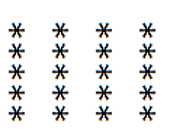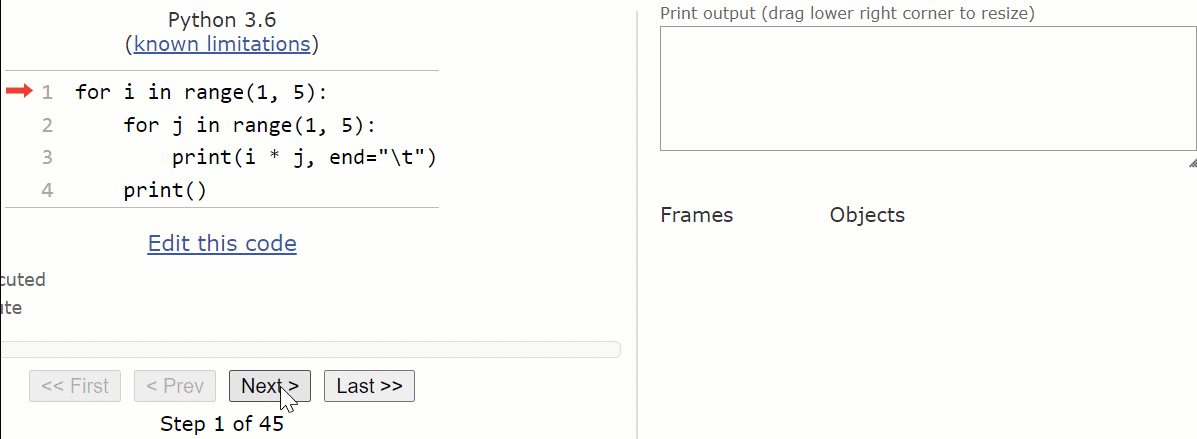|
11.1.2.7 use nested loops when solving problems
11.1.2.6 debug a program
Python. Nested loops
A nested loop has one loop inside of another.
These are typically used for working with two dimensions such as printing stars in rows and columns as shown below.

When a loop is nested inside another loop, the inner loop runs many times inside the outer loop. In each iteration of the outer loop, the inner loop will be re-started. The inner loop must finish all of its iterations before the outer loop can continue to its next iteration.
Example

Output

Trace nested loops

Task 1. Output the next stars.

n = int(input())
m = int(input())
for i in range(n):
for j in range(m): # nested loop
print('*', end='')
print()
Task 2. Output multiplication table in line for number n. (n < 10)
k = int(input())
for i in range(1, 10):
print(i, '*', k, '=', k * i, sep='', end='\t')
Input:
5
Output:
1*5=5 2*5=10 3*5=15 4*5=20 5*5=25 6*5=30 7*5=35 8*5=40 9*5=45
Task 3. How to output a full multiplication table?

for i in range(1, 10): # start of outer loop
for j in range(1, 10): # start of inner loop
print(i, '*', j, '=', i * j, end='\t’) # output the multiplication table
print() # newline
Task 3. The second way of solving
i = 1 # the initial value of the first factor
while i < 10: # condition for the first factor
j = 1 # the initial value of the second multiplier
while j < 10: # the condition for the second multiplier
print(i, '*', j, '=', i * j, end='\t') # output
j += 1 # the change of the second multiplier in the inner loop
i += 1 # change the first multiplier in the outer loop
print() # output new line
Commands break and continue in nested loops
while True: # start of external loop
while True: # the start of the inner loop
if [condition]:
continue # the transition to the next iteration in the inner loop
if [condition]:
break # the output of the inner loop
if [condition]:
continue # the transition to the next iteration in the outer loop
if [condition]:
break # the output of the outer loop
Questions:
Exercises:
Ex. 1 Write a program to print the following start pattern using the for loop

Ex. 2 In number theory, a perfect number is a positive integer that is equal to the sum of its positive divisors, excluding the number itself. For instance, 6 has divisors 1, 2 and 3 (excluding itself), and 1 + 2 + 3 = 6, so 6 is a perfect number.
Write a program to print all perfect numbers from 1 to 100
Tasks:
Tasks on Stepik.org course "Python Programming for NIS" | 




